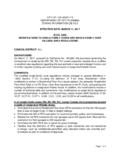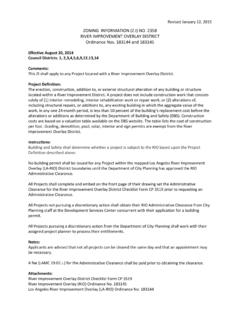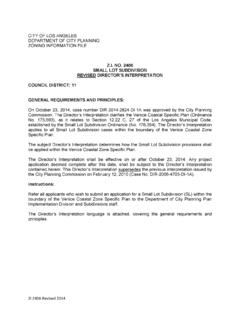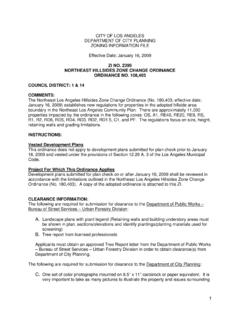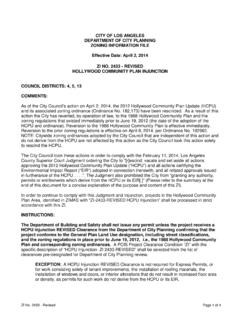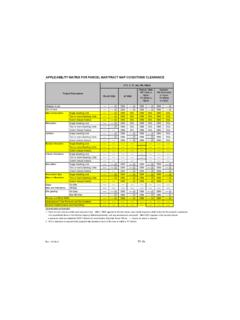Transcription of CITY OF LOS ANGELES DEPARTMENT OF CITY PLANNING …
1 CITY OF LOS ANGELES DEPARTMENT OF CITY PLANNING ZONING INFORMATION FILE ZI NO. 2452 TRANSIT PRIORITY AREAS (TPAs) / EXEMPTIONS TO AESTHETICS AND PARKING WITHIN TPAs PURSUANT TO CEQA CITYWIDE Note: This Zoning Information File is for information only and does not require any compliance check from LADBS or DCP. COMMENTS: On September 2013, the Governor signed into law Senate Bill (SB) 743, which instituted changes to the california Environmental Quality Act (CEQA) when evaluating environmental impacts to projects located in areas served by transit.
2 While the thrust of SB 743 addressed a major overhaul on how transportation impacts are evaluated under CEQA, it also limited the extent to which aesthetics and parking are defined as impacts under CEQA. Specifically, Section 21099 (d)(1) of the Public Resources Code (PRC) states that a project s aesthetic and parking impacts shall not be considered a significant impact on the environment if: 1. The project is a residential, mixed-use residential, or employment center project, and 2. The project is located on an infill site within a transit priority area.
3 Section 21099 (a) of the PRC defines the following terms: (1) Employment center project (TPAs) means a project located on property zoned for commercial uses with a floor area ratio of no less than and that is located within a transit priority area. (4) Infill site means a lot located within an urban area that has been previously developed, or on a vacant site where at least 75 percent of the perimeter of the site adjoins, or is separated only by an improved public right-of-way from, parcels that are developed with qualified urban uses.
4 (7) Transit priority area means an area within one-half mile of a major transit stop that is existing or planned. Section of the PRC defines a major transit stop" as a site containing an existing rail transit station, a ferry terminal served by either a bus or rail transit service, or the intersection of two or more major bus routes with a frequency of service interval of 15 minutes or less during the morning and afternoon peak commute periods. For purposes of Section 21099 of the PRC, a transit priority area also includes major transit stops in the City of Los ANGELES (city) that are scheduled to be completed within the PLANNING horizon of the southern california association of Governments ( scag ) Regional Transportation Plan / Sustainable Community Strategy (RTP/SCS).
5 While the Governor s Office of PLANNING and Research (OPR) is still in the process of drafting guidance to substantially revise transportation impact methodology for infill projects, the elimination of aesthetics and parking for infill projects went into effect January 2014. No further action is needed for the elimination of aesthetics and parking for infill projects, defined herein to take effect as part of the City s impact evaluations pursuant to CEQA. INSTRUCTIONS: Visual resources, aesthetic character, shade and shadow, light and glare, and scenic vistas or any other aesthetic impact as defined in the City s CEQA Threshold Guide shall not be considered an impact for infill projects within TPAs (shown in the attached map) pursuant to CEQA.
6 However, this law did not limit the ability of the City to regulate, or study aesthetic related impacts pursuant to other land use regulations found in the Los ANGELES Municipal Code (LAMC), or the City s General Plan, including specific plans. For example, DCP staff would still need to address a project s shade and shadow impacts if it is expressly required in a specific plan, Community Design Overlays (CDOs), or Historic Preservation Overlay Zones (HPOZs). Also note that the limitation of aesthetic impacts pursuant to Section 21099 of the PRC does not include impacts to historic or cultural resources.
7 Impacts to historic or cultural resources will need to be evaluated pursuant to CEQA regardless of project location. Find attached a citywide map of TPAs in the City of Los ANGELES . DEPARTMENT of City PLANNING (DCP) staff should use this citywide map in determining if a project is clearly within a TPA, and if aesthetics and parking are not to be included in a project s impact evaluation in a negative declaration (ND), mitigated negative declaration (MND) or environmental impact report (EIR) prepared in accordance with CEQA.
8 Eventually, TPAs will be identified in ZIMAS, however this map is to be referenced on an interim basis. Planners should also consult ZIMAS or Navigate LA if it cannot be determined from the map if a project site is within mile of a major transit stop. A project shall be considered to be within a TPA if all parcels within the project have no more than 25 percent of their area farther than one-half mile from the major transit stop and if not more than 10 percent of the residential units or 100 units, whichever is less, in the project are farther than one-half mile from the major transit stop.
9 Projects intersecting non-overlapping TPA boundaries would also need to demonstrate they are within one-half mile of a major transit stop based on boarding location information. The burden shall be on the project applicant to demonstrate their project is within a TPA for parcels along a TPA boundary. For further information regarding TPAs, contact Cally Hardy at (213) 978-1643. Further reference.

